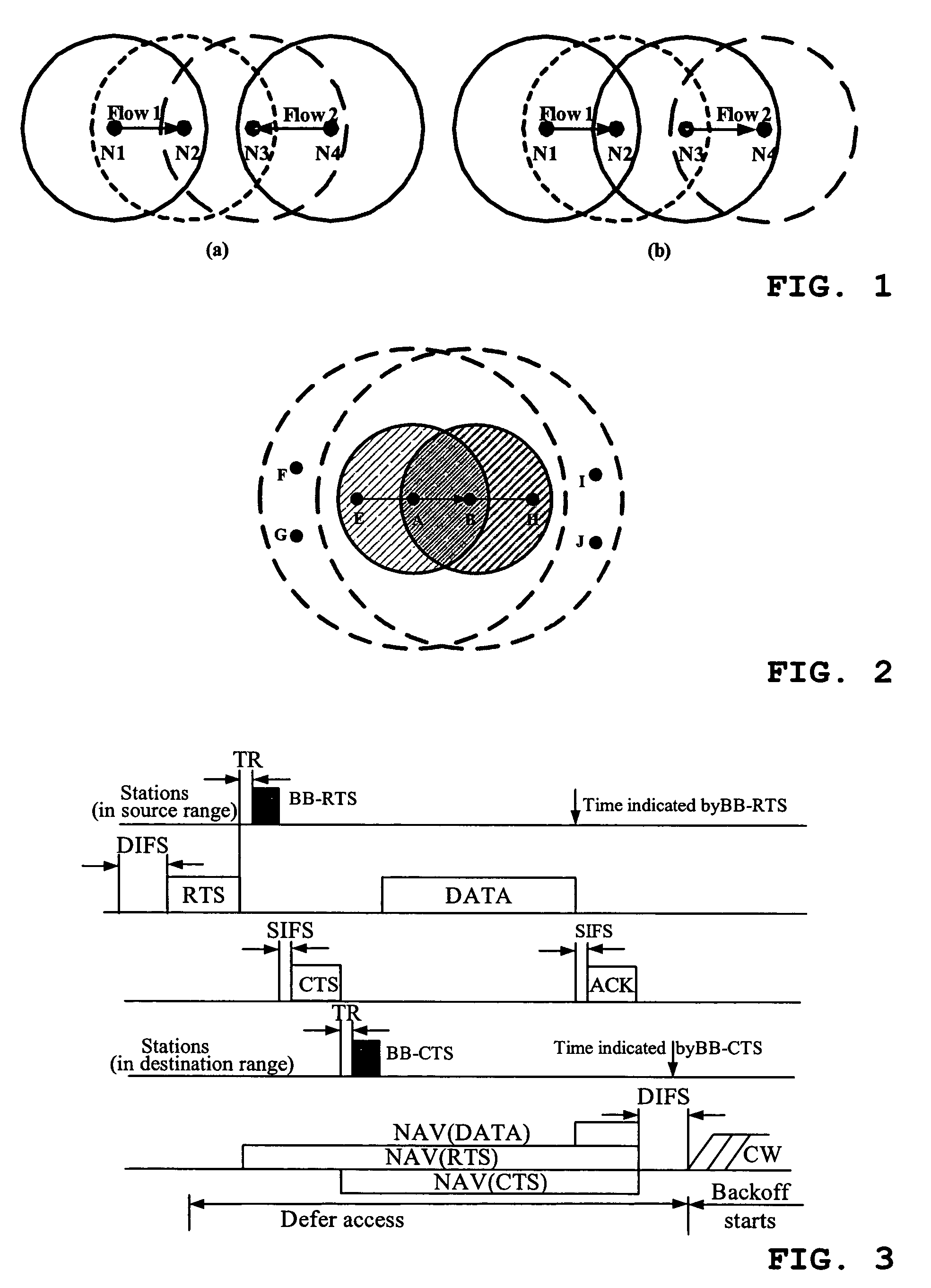Method for enhancing fairness and performance in a multihop ad hoc network and corresponding system
a multi-hop ad hoc network and performance enhancement technology, applied in the field of multi-hop ad hoc network and corresponding system enhancement, can solve the problems of large channel bandwidth waste, inability to solve the problem completely, and additional delay imposed by the overhead of rts/cts frames, etc., and achieve the effect of low implementation cos
- Summary
- Abstract
- Description
- Claims
- Application Information
AI Technical Summary
Benefits of technology
Problems solved by technology
Method used
Image
Examples
Embodiment Construction
)
[0059]In the following, a preferred embodiment of the present invention is described in detail by making reference to the drawings.
[0060]Specifically, the preferred embodiment of the present invention described is an example of an implementation of an algorithm. In detail, the implementation shall be referred to as the Black Burst Distributed Coordination Function, which commonly provides synchronization information for competing streams. Generally involved in such competing streams are stations which are typically hidden from each other, in other words, they are not in each other's range. Hence, the competition between hidden terminals is usually referred to as hidden competition here. The hidden competition scenario may be illustrated according to FIG. 2.
[0061]When station A is trying to communicate with station B, node H normally acts as a hidden terminal for node A. On the other hand, node E commonly acts as an exposed terminal. In FIG. 2, the respective range of source station...
PUM
 Login to View More
Login to View More Abstract
Description
Claims
Application Information
 Login to View More
Login to View More - R&D
- Intellectual Property
- Life Sciences
- Materials
- Tech Scout
- Unparalleled Data Quality
- Higher Quality Content
- 60% Fewer Hallucinations
Browse by: Latest US Patents, China's latest patents, Technical Efficacy Thesaurus, Application Domain, Technology Topic, Popular Technical Reports.
© 2025 PatSnap. All rights reserved.Legal|Privacy policy|Modern Slavery Act Transparency Statement|Sitemap|About US| Contact US: help@patsnap.com


